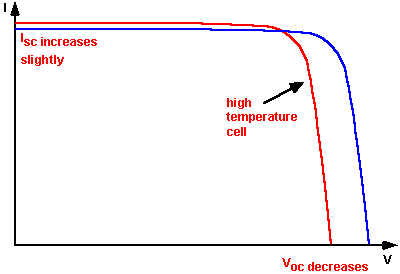



| AC Energy Produced: | 6648968.0 | kWh |
| AC Current Phase A: | 243.0 | degrees |
| AC Current Phase B: | 207.3 | degrees |
| AC Current Phase C: | 254.0 | degrees |
| Ambient Temperature: | 27.4º | Celcius |
| Wind Speed: | 6.41 | knots |
| Wind Direction: | 73.17º | |
| DataLogger Temperature: | 31.97º | Celcius |
| Cell Temperature: | 26.08º | Celcius |
| Horizontal Irradiance: | 27.4 | |
| POA Irradiance: | -0.17 | |
Start Date for Graphical Displays:
|
EQUIPMENT GRAPHS
|
| Draker Labs, a leading provider of solar monitoring solutions for commercial-scale photovoltaic (PV) projects, announced the introduction of its new Sentalis 200PV monitoring system. The Sentalis 200PV is a cost-effective solution for PV systems with an energy capacity of 50-250KwH. |
|
Like all other semiconductor devices, solar cells are sensitive to temperature. Increases in temperature reduce the band gap of a semiconductor, thereby effecting most of the semiconductor material parameters. The decrease in the band gap of a semiconductor with increasing temperature can be viewed as increasing the energy of the electrons in the material. Lower energy is therefore needed to break the bond. In the bond model of a semiconductor band gap, reduction in the bond energy also reduces the band gap. Therefore increasing the temperature reduces the band gap. In a solar cell, the parameter most affected by an increase in temperature is the open-circuit voltage. The impact of increasing temperature is shown in the figure below. 
|
| The radiation reaching the earth's surface can be represented in a number of different ways. Horizontal Irradiance is the total amount of shortwave radiation received from above by a surface horizontal to the ground. The surface is the solar panel. |
Plane of Array (POA) Irradiance is A fundamental step in calculating PV performance is determining the irradiance
incident on the plane of the array (POA) as a function of time. This POA irradiance is dependent upon several factors,
including:
|